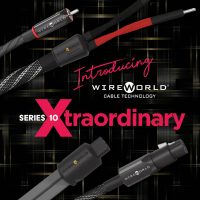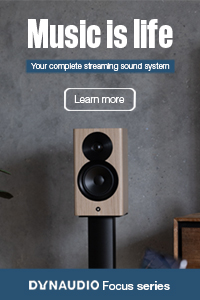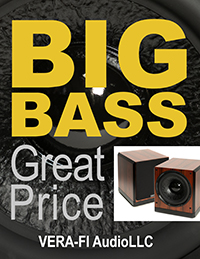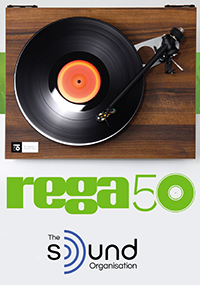 Sometimes, there’s no substitute for tradition or heritage. Consider: The original Luxman SQ-38 integrated amplifier debuted in 1963 and followed by the SQ-38D in 1965. The SQ-38u is, in fact, the eleventh incarnation of the design, and the new model looks every bit like vintage hi-fi even as its insides reflect modern thinking.
Sometimes, there’s no substitute for tradition or heritage. Consider: The original Luxman SQ-38 integrated amplifier debuted in 1963 and followed by the SQ-38D in 1965. The SQ-38u is, in fact, the eleventh incarnation of the design, and the new model looks every bit like vintage hi-fi even as its insides reflect modern thinking.
History aside, I was relieved to hear that the SQ-38u sounds like what it is: A vacuum tube integrated amplifier. A lot of contemporary tube gear sounds more or less like solid-state. Not the SQ-38u. And while it’s certainly not the least bit dated or slow sounding, you’d never mistake it for a transistor amp. It’s too holographic, tonally sweet, and pure. But if solid-state sound is what you’re looking for, Luxman offers a tasty selection of SS integrated models from which to choose. The company also offers a matching PD-171 turntable ($6,000) and D-38u CD player ($4,000) for buyers interested in maintaining the retro look.
You Can Look—And Touch
Of course, the appeal of the SQ-38u’s machined front panel—and its cluster of metal knobs and switches—is more than skin deep. Just like the good old days, the controls have a perfect feel. There are eight knobs in all: An A/B speaker selector; Separates On/Off (controls the rear panel preamp output jacks); Input Selector; and a silky-smooth Volume Control; Bass and Treble; Phono Cartridge Gain; and left/right Balance. Three switches—Low Cut (rumble filter), Mono/Stereo, Tape Monitor—are flanked by a headphone jack and mute button. The metal chassis is sheathed in a handsome wood case, and the little remote control simply handles volume and mute.
Connectivity isn’t generous but it’s certainly adequate, and the connectors are comprised of high-quality materials. You get five pairs of RCA inputs: Rec Out/Monitor; Pre-Out/Main-In jacks; and two sets (A & B) of speaker binding posts. The tube complement runs to four EL 34 power tubes, four 12AX7s, and three 12AU7s planted within the 15.7″ wide by 7.7″ high by 12.2″ deep chassis. The SQ-38u weighs a very solid 44 pounds. It’s built!
The all-tube phono section handles moving magnet as well as low- and high-output moving coil cartridges, the latter two options via step-up transformers. Built-in phono preamps are rare on today’s integrated amps, especially tube models, so I was eager to test out the SQ-38u’s vinyl playback abilities. The sound was yummy, and brought out the best on Blondie’s debut LP. I forgot how perfect a fit singer Debbie Harry was in the band, and the record contains the sort of music that’s best enjoyed turned up loud. Everything I love about analog sound was just that much more delicious with the SQ-38u in the system. Tube noise? Commendably low.
Unlike those on most integrated amps, the headphone amp isn’t based on a little op amp. Rather, this bad boy uses the tube output stage that drives your speakers, albeit padded down with just one resistor to play headphones! That’s right: You get the same sound from your headphones as the speakers. Extremely dynamic and very transparent, the SQ-38u’s headphone sound is far and away the best I’ve heard from an integrated amp. The Luxman had no trouble driving difficult models like the Hifiman HE-6 planar magnetic headphones. Suffice it to say that the SQ-38u is completely on par with my $1,050 Woo Audio WA-6SE tube headphone amp.
Tone controls? Wow, it’s been a long time since I last used a high-end product with bass and treble controls, and those on the SQ038u are the same as those on the original 1963 design. Subtle gradations of bass and treble shifts can make less-than-stellar-sounding recordings, like Bruce Springsteen’s Darkness on the Edge of Town CD, more listenable. I dipped the treble down to eleven o’clock, and the bass up to 1:30. Much better. Once I really got into the music, I realized what I’ve missed from the Boss’ more recent albums: The band doesn’t sound like a band anymore. On Darkness, Springsteen is playing with a band of brothers. The SQ-38u brought out the best of them without highlighting the recording’s harshness.
Better still, when I played an audiophile recording with real spatial depth—as opposed to digital reverberation—the SQ-38u unleashed a fully three-dimensional soundstage. Puente Celeste’s Nama, a CD from MA Recordings, is recorded “live” with no overdubs and on a pair of custom microphones; the sound was palpably alive. The disc ideally captures the sound of musicians playing in real time, listening, and reacting to each other. A pure thrill, as the sound went beyond mere hi-fi.
I initially listened to the SQ-38u with a pair of Zu Soul Superfly speakers (reviewed in Issue 35), which proved a match made in heaven, but later used my Zu Essence speakers. Duke Ellington’s Blues In Orbit SACD bounded out of the Essence models with rare gusto. The music may have been recorded a half century ago, but it was alive and kicking as if made yesterday.
Inspired, I dug out Rhino Records’ Beg Scream & Shout box set: Six CDs loaded with the very best Motown, Stax, and indie soul, from gems like Jackie Wilson’s “Baby Work Out” to one of my all-time favorite party tunes of the 1960s, the Bar-Kays’ “Soul Finger.” This music is all about energy and drive. Could the SQ-38u deliver? In a word, abso-funk-en-lutely! I couldn’t stop jumping around, just like I did when I was a teenager hearing these tunes for the first time. Never once did I think about transparency or palpable imaging.
For the last great live Stones album, 1995’s Stripped, I switched over to Dynaudio’s C1, a more precise-sounding speaker than the Essence. Soundstage focus is also superior, and the SQ-38u surprised me with its weight and gravitas. Quieter, acoustic-based tunes like “Wild Horses,” “Angie,” and “Love in Vain” were reach-out-and-touch vivid, and claimed to-die-for intimacy. Harder-rocking tunes such as “Street Fighting Man” and “Like a Rolling Stone” felt, to a certain degree, reigned-in. Power wasn’t the issue. The SQ-38u played loud enough, but dynamics were perceptively scaled down and blunted the Stones’ full-frontal assault.
Shifting gears, on Brian Eno’s Ambient 4: On Land, ever-shifting soundscapes and churning atmospheres glide over squeaking, fluttery accents. There’s a lot going on, and the depth of the stage mesmerizes. Solid-state amps produce the textures but suppress the space. The Luxman made the album come alive, offering up an immersive experience, which is how this recording should be experienced.
From tubes, I want romance, and the SQ-38u delivers. I’m not a fan of tube amps that try to go toe-to-toe with solid-state amps in regards of control and razor-flat response. Hence, when I compared the SQ-38u with my Parasound JC-2 preamp and First Watt J-2 (25 watt x 2) amp while listening to Nusrat Fateh Ali Khan and Michael Brook’s Night Song, the solid-state versus tube sound contest didn’t produce a clear winner.
The JC-2/J2 unfurled a more precisely focused soundstage, with more taut bass, but the SQ-38u gave me more of Ali Khan’s 300-pound heft. Pardon the cliché, but the tube sound possessed more palpable body and roundness. To be sure, the CD sounded great with both components. It’s just that the SQ-38u shaved off a tiny bit of the CD’s edge. The Luxman sounds less like a hi-fi component, and more like live music; the JC-2/J2 is more tuneful and rhythmically agile.
Gimme Some Truth
Some otherwise fine amps can’t supply the essence of music. They may be transparent, image well, and uncork many a recordings’ full dynamic range, but the sound still misses the mark. Musical truth separates this Luxman from the pack. The SQ-38u zeroes in on the music and satisfies the soul.
Regardless of whether you choose its solid-state or vacuum tube models, Luxman seems to have captured the market in terms of providing a warm, somewhat romantic sound. Akin to the company’s L-590A II integrated (reviewed in Issue 13), the SQ-38u is a modern classic, with vintage styling cues and tone controls. There’s even a cool, tiny yellow LED in the volume control that blinks while the amplifier warms up.
While I also had a pleasant experience with the Zu speakers, my little slice of heaven came courtesy of B&W’s 805D speakers. Their highly resolving nature, smoothed ever so slightly by those EL-34 output tubes, made for a delicious presentation. My recently restored JBL-L100s also made for an intriguing albeit more vintage-sounding system.
Caveat: If you are looking for the last word in vacuum tube resolution, look elsewhere. But if you’d like to stop stressing out over what vinyl pressing you need to locate, the SQ-38u is what you want. Its phono stage is killer. All three positions (MM, MC-low, MC-high) work equally well, but the combination of a Rega P9 with Shelter 501 proved irresistible. The Denon 103 comes in a close second.
Granted, a 30-watt-per-channel tube amplifier can’t be everything to everyone; it won’t play heavy rock or major orchestral works at anywhere near realistic volume levels with most speakers. But if you’d like to get off the audiophile roller coaster and just enjoy the majority of your music collection without hassle, I can’t think of a better choice than the SQ-38u. It’s a magic amplifier that offers the perfect blend of tube romance without the layer of murkiness that plagues vintage tube designs. I can see why it has been such a popular model for so many years. Highly recommended. –Jeff Dorgay
Manufacturer Information
Luxman SQ-38u
MSRP: $6,000
www.onahighernote.com (U.S. importer)
Peripherals
| Analog Source | VPI Classic turntable with van den Hul Frog cartridge |
| Digital Sources | Ayre C-5xe MP Universal Player Oppo BDP-83 Special Edition |
| Preamplifiers | Parasound JC 1 preamp Whest 2.0 phono preamp |
| Amplifiers | Parasound JC Pass Labs XA100.5 First Watt J2 |
| Speakers | Dynaudio C-1 Zu Essence Mangepan 3.6 |
| Cable | Zu interconnects and speaker cable Analysis Plus Silver Oval interconnects |

















